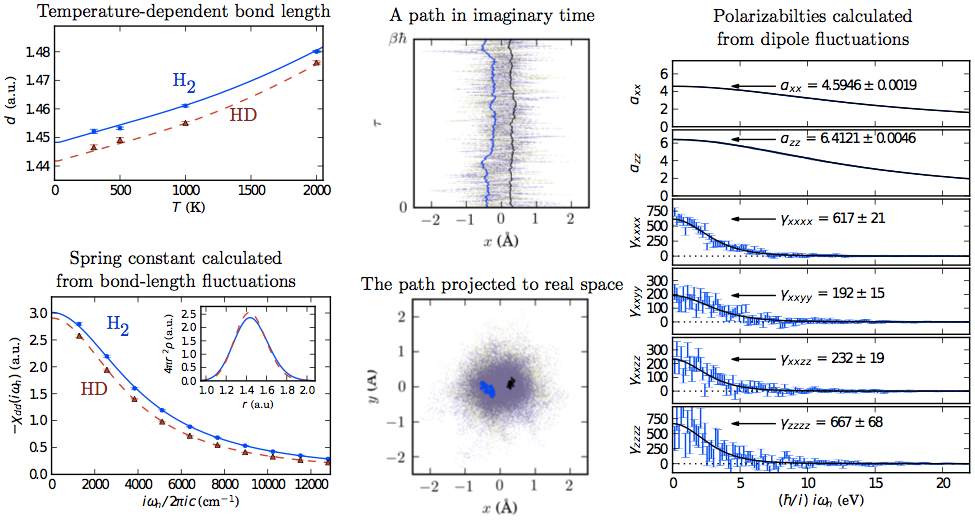Project Home (pi-qmc)
Table Of Contents
Previous topic
Next topic
This Page
Quick search
Enter search terms or a module, class or function name.
A primary motivation of pi-qmc is to have a framework so that features developed by one student or for one research project can be used in many different contexts. Some of the many features developed for pi-qmc include:
We are developing system integration tests to document and verify the status of these features.
We have performed careful calculations on a H2 molecule.

An illustrative calculation of a hydrogen molecule at 295 K. (Top center) A typical path in imaginary time for HD, showing low-mass electrons (faint lines), a proton (blue, left) and a heavier deuteron (black, right). (Bottom center) The same path, shown in real space. (Top left) Calculated bond length for H2 and HD, showing zero-point expansion from the d = 1.40 a0 potential minimum and thermal expansion due to molecular vibrations and rotations. (Bottom left) Dynamic fluctuations in the bond length give the linear-response to a stretching force (inverse spring constant) and vibrational frequency. (Right side) Fluctuations in the dipole give the polarizabilities α and hyperpolarizabilities γ.